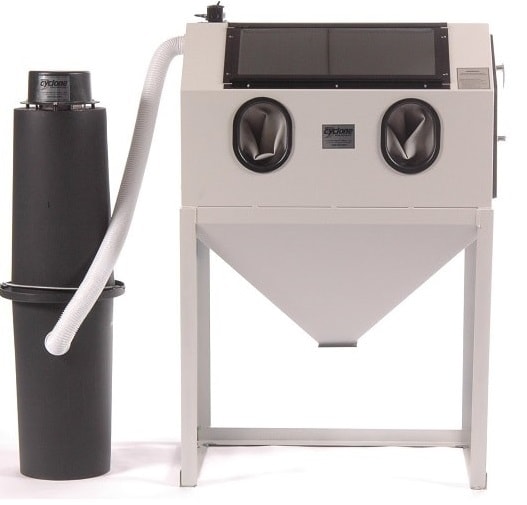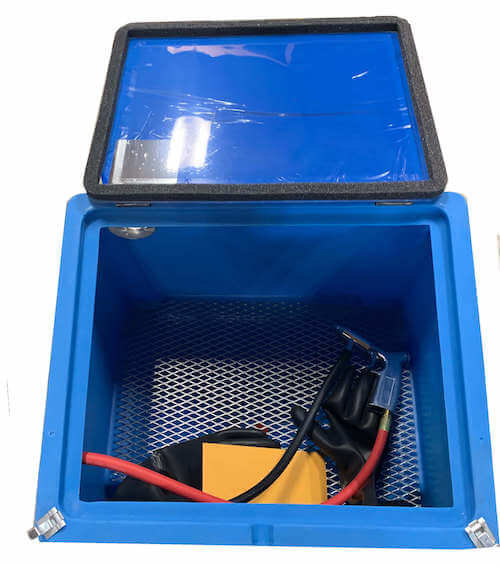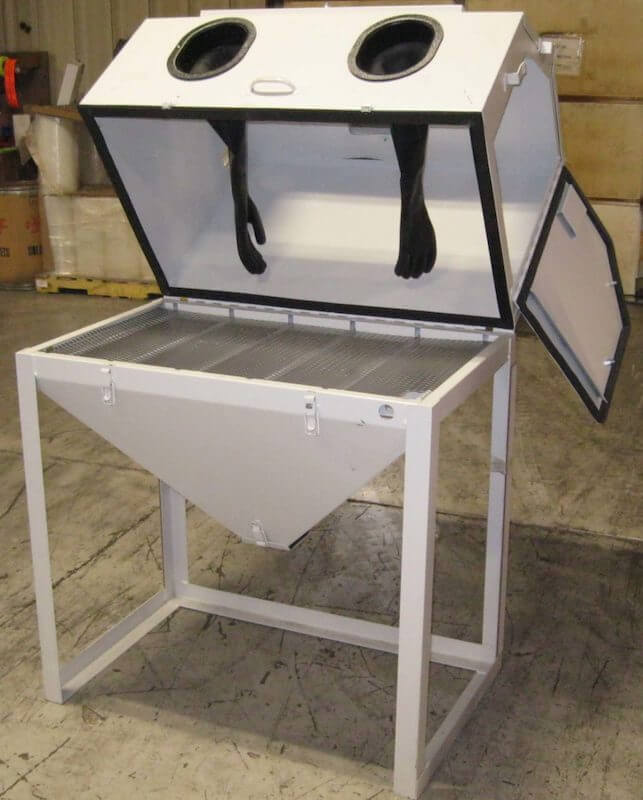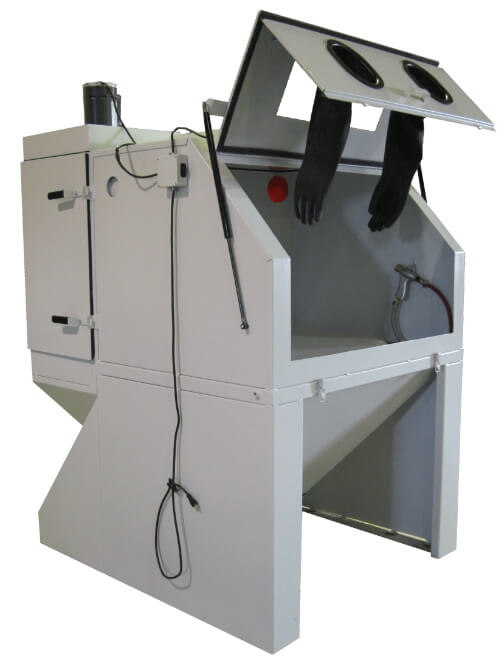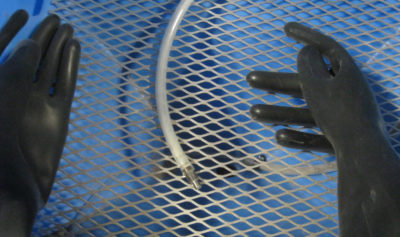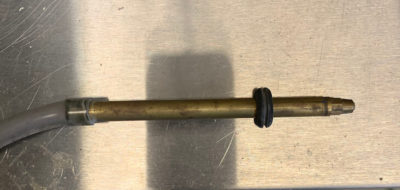Hobby Sandblaster
What is a hobby sandblaster? A hobby sandblaster is often used by the DIY community or home users for a variety of tasks. Typically, they require low airflow and thus a smaller air compressor. Next, their sandblasting chamber is smaller than larger sandblasting cabinets. Finally, a good hobby sandblaster should not be cheaply made or lack the power that you need. Affordable options are available that deliver high quality at budget friendly pricing.
Key Characteristics of a Hobby Sandblaster
✔ Sandblast Chamber ✔ Sandblasting Gun ✔ Sandblast Cabinet Size ✔ Cabinet Construction
A search for hobby sandblaster on the Internet probably brought you here. We did the same search and we found a lot of options. We noticed that there are handheld sandblasters capable of extremely detailed sandblasting. They don’t require a lot of air or abrasive media. These machines also do not have a blast chamber to contain the stream and mess.
Chamber or No Chamber?
Shown below is a sandblast cabinet. The interior of the cabinet where the actual blasting takes place is often called a blast chamber. The chamber is ideal for containing the actual blasting process. Many hobby sandblasters are handheld and don’t have a chamber. Depending on what you blast and what you blast with this might be sufficient. For many hobbyists, the ideal situation is that the mess of blasting is contained in a chamber.
Some hobbies are bigger than others! As a result, size does matter when it comes to a sandblaster. Cabinet size for engraving glassware is very different from the motocross hobbyist who sandblasts bike frames and parts. Just remember that it is important to think about what you are blasting today as well as what you may sandblast at a later date.
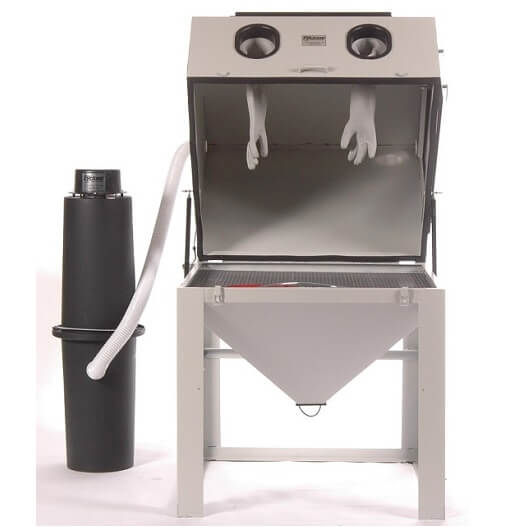
Benchtop Chamber
Sandblaster Gun
A sandblaster gun is not a firearm. However, it does produce a powerful flow of abrasive projectiles. Sandblast guns come in various configurations: trigger, foot pedal controlled, and pencil and wand controlled. Each has pros and cons depending on your use. We cover that in this article.
So which hobby sandblaster gun is right?
The important takeaway from this article is understanding what you intend to sandblast. Do you plan on precision work or covering large areas when blasting? Pencil blasters and wands are ideal for precision work. For example, large trigger sandblaster guns and handheld guns are better suited for higher CFM and for covering more areas.
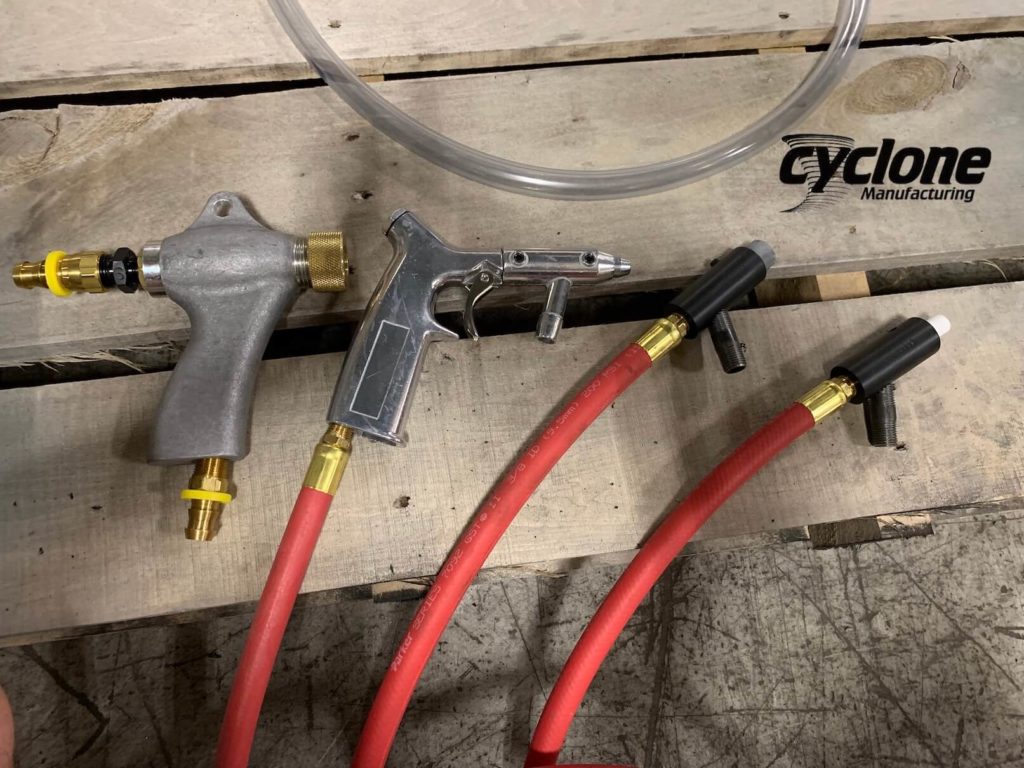
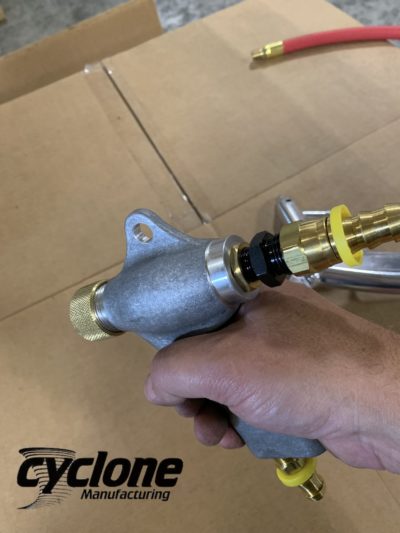
35 CFM Gun, Pedal Operated
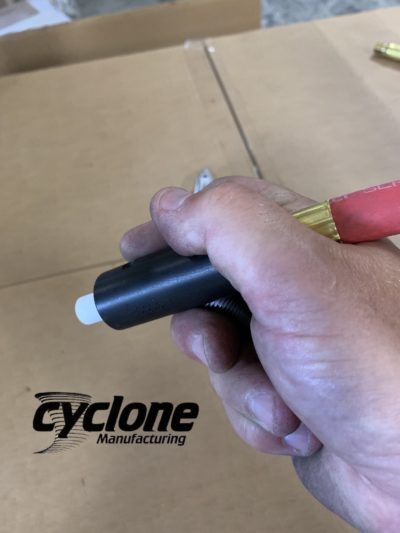
14 CFM, Pedal Operated
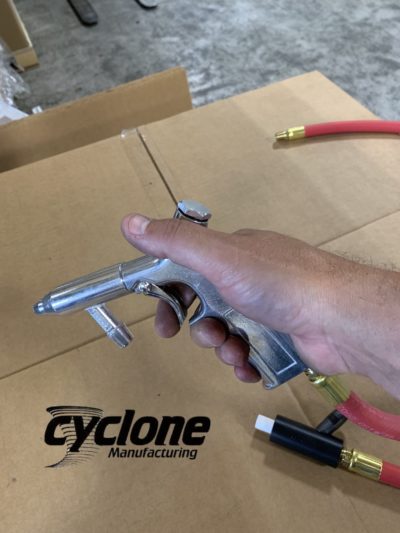
14 CFM, Trigger Operated
Hobby Sandblaster CFM
For some CFM is a new term. And, perhaps the biggest component to a sandblaster is the sandblast gun’s CFM. This is because it describes the amount of air and abrasive mixture coming out of the sandblast gun. CFM stands for Cubic Feet per Minute. It is a measurement of airflow. This term helps us understand how much air and abrasive are consumed. This matters because CFM impacts what kind of air compressor you will need to “power” your sandblaster. Our CFM measurements are given here along with approximate air compressor horsepower demand. This can be complicated, and if you have questions we’d be happy to answer them.
CFM and Precision
CFM also gives you an idea of how quickly your work can be done. With a 1.5 CFM pencil gun, you won’t be able to blast as much surface area as you will with a 35 CFM blast gun. It’s simply more air and abrasive coming out of the gun. So, if you are trying to blast with precision, a 35 CFM gun is not going to be the ideal choice. As with anything in sandblasting it depends on what you are going to blast! The below images are not actual blast patterns. They are just exaggerated examples to show the difference between different nozzle CFM measurements.
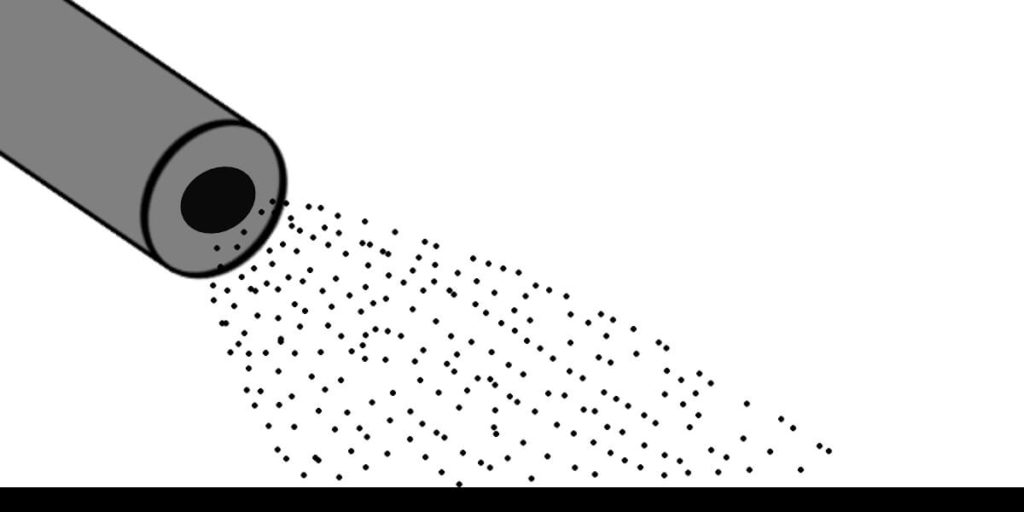
35 CFM Nozzle
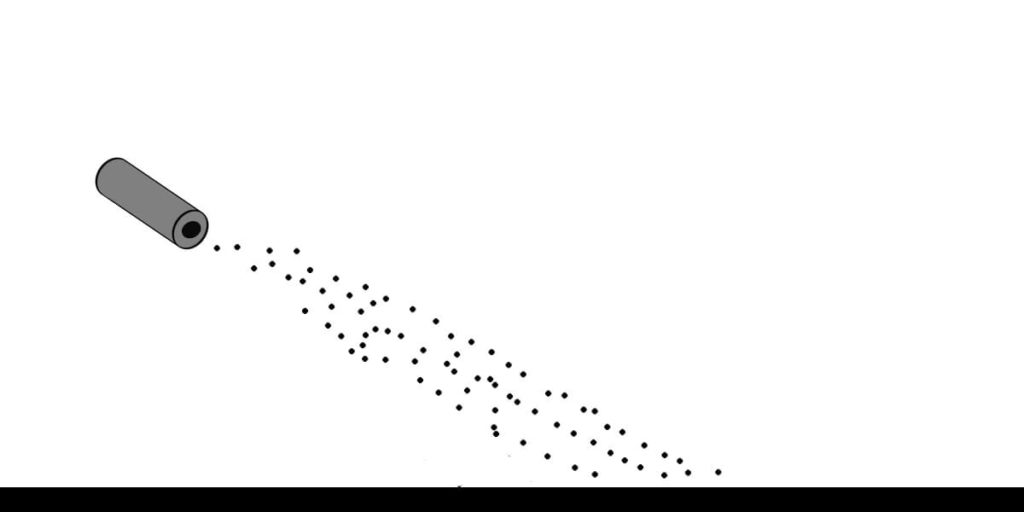
14 CFM Nozzle

1.5 CFM Nozzle
Hobby Sandblast Cabinet Size
As earlier stated, what you intend to blast drives the selection of a blast cabinet. Part size today, and tomorrow, drive the size of cabinet you select. A big factor in cabinet size is where you intend to place the cabinet. Some blast cabinet sizes are very large. In fact, some industrial cabinets occupy an entire room. For the hobby sandblaster users this is not likely. Instead, your cabinet may be in a garage, workshop, or basement. Shown below is a picture approximating the size of a 6′ tall person compared to several of our smaller blast cabinets.
Doors & Other Obstacles
For a home hobbyist searching for a blast cabinet the final location may be effected by many factors. Delivery location and obstacles to the final destination can cause problems. When you are selecting the cabinet consider how tall, wide and deep the cabinet is. All Cyclone blast cabinets display these dimensions. They are critical for locating your cabinet. Consider not only where the cabinet will rest but also how you will get the cabinet there. Corners and doorways may cause problems if they prevent you from locating your cabinet. Larger cabinets are delivered by truck whereas our benchtop models can be shipped by UPS. When you order from Cyclone we can help make arrangements for larger deliveries.
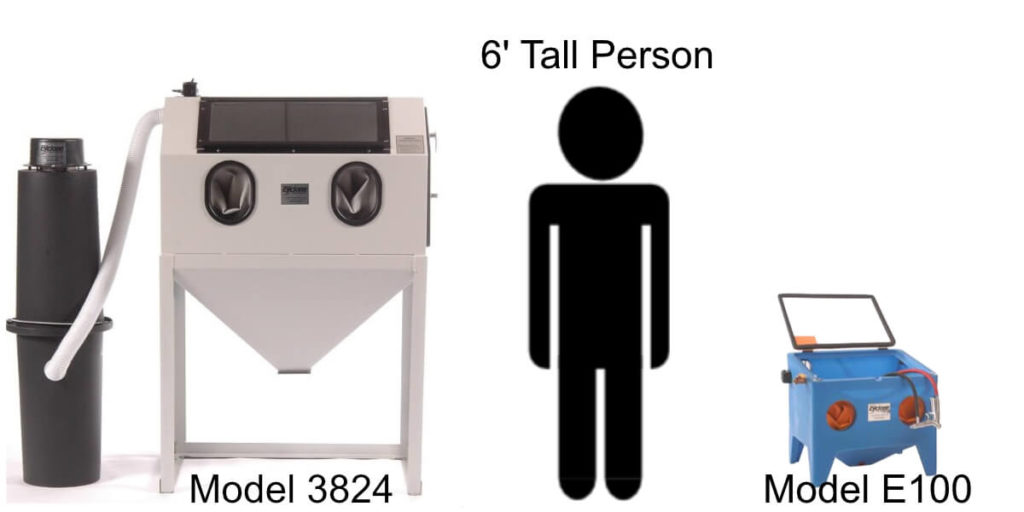
Blast Cabinet Construction
Welded Steel & Polyethylene
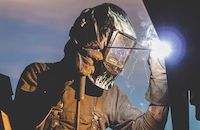
We introduced the idea of the blast chamber earlier in the reading. The chamber’s construction is also important to think about. There are many inexpensive blast cabinets on the market. Unfortunately, many of them are poorly made and will leak. In fact, some require complete assembly upon arrival. Although you spend less, you will be disappointed in the long run. The real cost of one of these cabinets is the construction. Assembly can mean dozens if not hundreds of bolts. Bolting chambers to legs, legs to feet, and doors to chambers. As a result, this becomes time consuming and will lead to leaks.
Benchtop Hobby Sandblaster
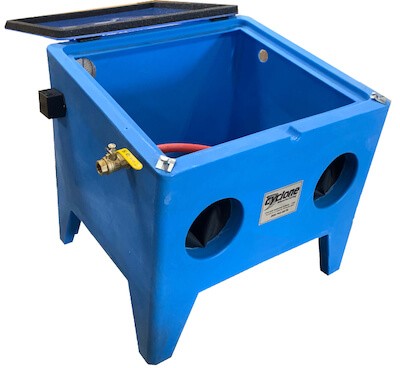
For our benchtop hobby sandblasters we chose polyethylene. First, it is lighter and easier to move around than a steel benchtop. Second it costs less to produce. Additionally, when we engineered our E100 series of cabinets we did so with rotationally molded polyethylene. As a result, our benchtop models are seamless. This means they will not leak.
Fully Assembled
Cyclone offers welded steel blast cabinets. Additionally, our benchtop units are constructed from thick, seamless polyethylene. Next, from top to bottom our steel cabinets are welded, sealed, and painted. All our cabinets arrive fully assembled. This gives you two very important things. First is stability. Welded steel legs, chambers and doors provides incredible strength and stability. Even if you are blasting lightweight parts, you want a stable platform on which to blast.
Next, the second advantage to a fully assembled cabinet is with welded seams. This means you don’t have leaks. A blast cabinet is essentially pressurized during use which can force air and media out of even the slightest opening. So, all those bolts we discussed before can really create a problem.
Need some help?
Selecting a sandblaster should be fun. It is an investment, just like any tool. As a result, our intent was to introduce some basic ideas to help you narrow down your choice. Above all else we hope we demonstrated our blast cabinet offerings are ideal for your application. If we can help answer questions about your specific application or any questions you may have we are happy to do so.

